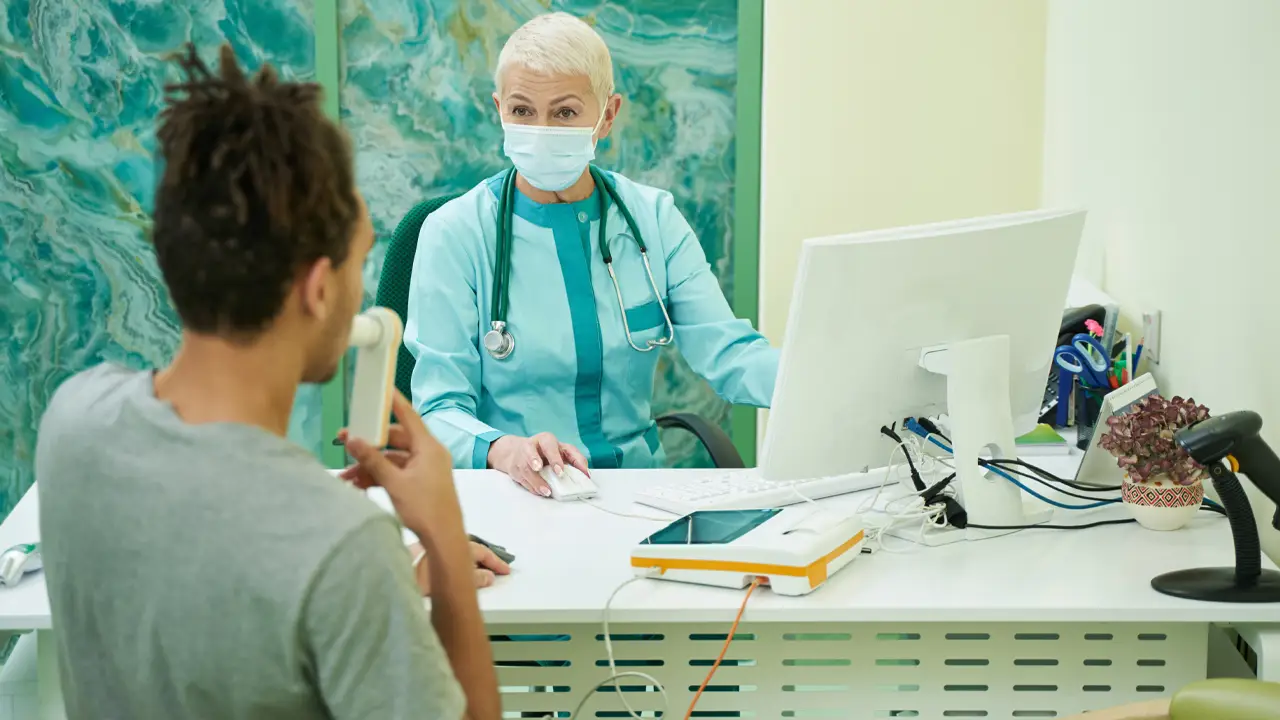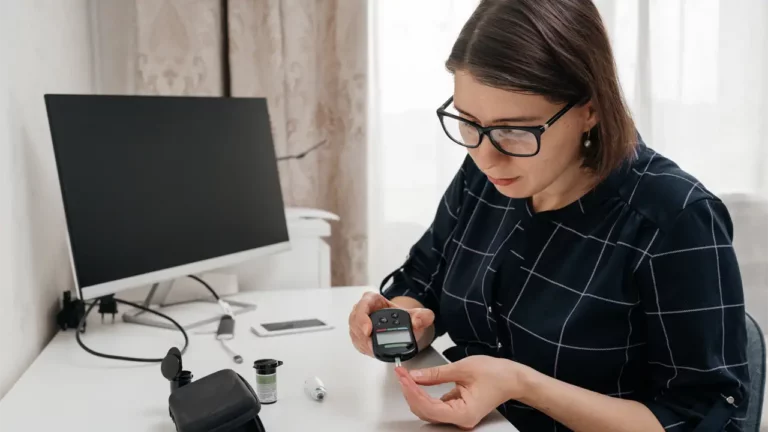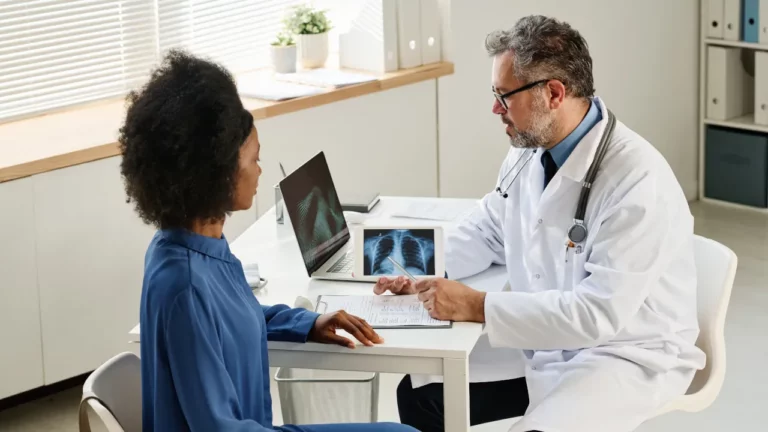Chronic Obstructive Pulmonary Disease (COPD) is a common and serious lung disease that affects millions of people worldwide. According to the World Health Organization (WHO), it is the third leading cause of death. It is characterized by a progressive narrowing of the airways, making breathing increasingly difficult. COPD is caused by a combination of factors including smoking, air pollution, and genetics. Early diagnosis is critical to managing and treating COPD effectively, and to improving the quality of life of those affected by the disease.
In this article, we will discuss the importance of early COPD diagnosis, common COPD symptoms, and how remote patient monitoring (RPM) is revolutionizing the COPD diagnostic process.
Traditional COPD Diagnostic Methods
Diagnosing COPD can be a complex and time-consuming process. Traditionally, COPD diagnosis has relied on a combination of physical exams, medical history, and various tests to determine the presence and severity of the disease. The following are some of the most common traditional COPD diagnostic methods:
- Spirometry: Spirometry is a simple test that measures lung function by determining how much air a person can exhale in one breath. The test is performed using a spirometer, which is connected to a small machine. The patient takes a deep breath and blows air out of their lungs into the spirometer, which measures how much air they can exhale in one second.
- Chest X-rays: Chest X-rays can help diagnose COPD by showing images of the lungs and airways. X-rays can detect signs of emphysema, which is one of the main types of COPD.
- Blood Tests: Blood tests can help diagnose COPD by measuring the amount of carbon dioxide in the blood. Elevated levels of carbon dioxide in the blood can indicate that the lungs are not functioning properly.
- CT Scans: CT scans use X-rays and computer technology to produce detailed images of the inside of the body. CT scans can be used to diagnose COPD by showing the extent of lung damage.
- Arterial Blood Gas Test: This test measures the oxygen and carbon dioxide levels in the blood. It can help determine how well the lungs are exchanging oxygen and carbon dioxide.
These traditional methods of COPD diagnosis are still commonly used, but RPM is providing new opportunities to diagnose COPD earlier and more accurately.
The Role of Remote Patient Monitoring in COPD Diagnosis
RPM is revolutionizing the way COPD is diagnosed and managed. With RPM, patients can use wearable devices and telehealth technologies to monitor their symptoms and vital signs from the comfort of their own homes. This provides a more convenient and accessible way for patients to receive a COPD diagnosis and receive ongoing care.
One of the primary benefits of RPM for COPD diagnosis is the ability to track symptoms and vital signs in real-time. This information can be used by healthcare providers to identify early signs of COPD and diagnose the disease before symptoms become severe. RPM also allows for continuous monitoring of patients with COPD, which can help healthcare providers to better understand the disease progression and adjust treatment accordingly.
In addition to improving the accuracy of COPD diagnosis, RPM also has the potential to reduce the cost and time associated with traditional diagnostic methods. By eliminating the need for in-person appointments, RPM can reduce the burden on healthcare systems and improve the overall patient experience.
The COPD Diagnostic Process using Remote Monitoring
The COPD diagnostic process using RPM typically involves the following steps:
- Initial Consultation: Patients are typically referred to a healthcare provider for a COPD evaluation. During this initial consultation, patients provide information about their symptoms and medical history.
- Wearable Device and Telehealth Technology Setup: Patients are provided with wearable devices, such as spirometers, to monitor their lung function and symptoms. They are also given access to telehealth technology, such as an app, to communicate with their healthcare provider.
- Continuous Monitoring: Patients use wearable devices and telehealth technology to monitor their symptoms and vital signs on a continuous basis. This information is transmitted to the healthcare provider, who uses it to monitor the patient’s condition and make treatment decisions.
- Diagnostic Evaluation: Based on the information gathered through remote monitoring, healthcare providers can evaluate the patient’s condition and determine if they have COPD. If necessary, the healthcare provider may recommend additional diagnostic tests, such as a chest X-ray or CT scan, to confirm the diagnosis.
- Treatment and Management: Once a COPD diagnosis is confirmed, the healthcare provider can develop a treatment plan and provide ongoing care through remote monitoring. This allows for continuous monitoring of the patient’s condition, which can help healthcare providers to adjust the treatment plan as needed.
By leveraging wearable devices and telehealth technology, the COPD diagnostic process using remote monitoring can provide a more convenient and efficient way to diagnose and manage COPD. This can help to improve the accuracy of COPD diagnoses, reduce the cost and time associated with traditional diagnostic methods, and improve the overall patient experience.
Importance of COPD Diagnosis for Treatment and Management
Early and accurate diagnosis of COPD is crucial for effective treatment and management. With the right diagnosis, people with COPD can receive appropriate care and treatment plans, which can help improve their quality of life and slow down the progression of the disease.
A proper COPD diagnosis can also help identify other underlying conditions that may contribute to the symptoms and make it easier for the healthcare provider to create an effective treatment plan. Moreover, the diagnosis can help monitor the progression of the disease and make changes to the treatment plan as needed.
Early diagnosis is also important for people with a high risk of developing COPD, such as smokers and people exposed to air pollution and secondhand smoke. With RPM, healthcare providers can detect COPD in its early stages and provide appropriate treatment, which can slow down the progression of the disease and prevent severe symptoms.
DrKumo Remote Patient Monitoring Solutions for Early COPD Diagnosis
COPD is a serious lung disease that can cause shortness of breath, chronic bronchitis, and other symptoms. Early diagnosis is crucial in helping patients manage their COPD and improve their quality of life. A doctor may use a lung function test or imaging tests to help detect COPD and determine the severity of the disease.
DrKumo RPM solution provides patients with the ability to monitor their COPD symptoms from the comfort of their homes. The technology enables healthcare providers to access real-time data and receive alerts if a patient’s symptoms worsen, helping them to quickly intervene and manage the COPD effectively. With its AI/ML engine, DrKumo RPM solution helps to detect changes in the patient’s symptoms like shortness of breath, which can be an early sign of COPD worsening. This technology provides healthcare providers with the ability to offer new treatments and manage disease proactively, improving patients’ quality of life.
Takeaways
COPD, a chronic lung disease that can severely affect quality of life, is traditionally diagnosed using spirometry, chest x-rays, and blood tests. However, Remote Patient Monitoring (RPM) has proven to be a valuable tool in diagnosing the severity of COPD, identifying genetic disorders such as alpha-1 antitrypsin deficiency, and monitoring lung function, shortness of breath, and other symptoms. The use of RPM and spirometry tests is recommended by organizations like the American Lung Association, as they can aid in early detection and better management of COPD, allowing for pulmonary rehabilitation and lifestyle changes to improve quality of life.
Take control of your health and schedule a comprehensive COPD diagnostic evaluation today to ensure timely and effective management of your condition. Contact DrKumo now.
Disclaimer: This information is provided for educational purposes only and is not intended to replace professional medical advice. It is important to always consult with your doctor or healthcare provider before making any changes to your health, including starting or stopping medications or treatment plans. Your doctor or healthcare provider can provide personalized recommendations based on your individual health needs.








